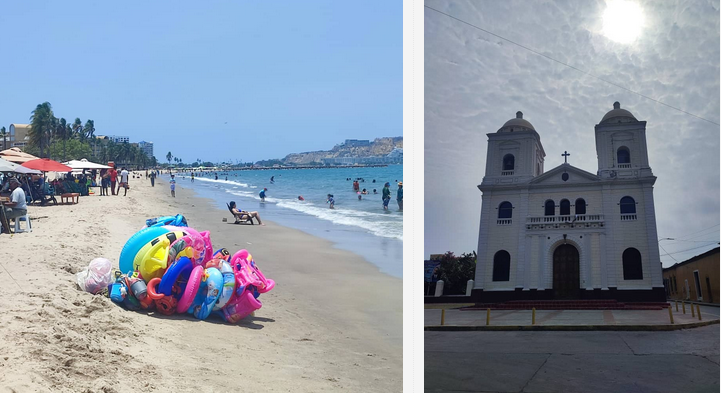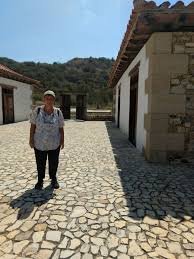
En la semana santa se realizan diversas actividades tanto en el campo religioso como en actividades culturales y recreativas. Es por eso que podemos disfrutar de cualquiera de estos espacios a nuestro gusto. Cuando era pequeña teníamos que combinar ambas ir un poco a la playa o al rio y cumplir con las actividades religiosas de nuestra iglesia católica.
La fotografía de la izquierda es una muy conocida playa de la ciudad de Lechería como la conocemos y pertenece al Municipio Diego Bautista Urbaneja del estado Anzoátegui, Venezuela.
Recuerdo cuando era niña que ese cerro al fondo de la fotografía, llamado cerro el Morro, estaba unido por una pequeña franja de arena y si no regresabas antes de las cuatro de la tarde el agua la cubría y tendrías que regresar nadando. Hoy en día lo rellenaron y colocaron un puente un poco alto y debajo de la vía pasan pequeñas lanchas.
Un primo que le encantaba explorar antes que hubiesen vías y carreteras por allí por lo menos transitables solo por caballos, nos hablaba de un castillo o las ruinas de una fortaleza. Hoy en día recuperadas como paseo turístico y conocida como el fortín de la Magdalena.
During Holy Week, various religious, cultural, and recreational activities take place. That's why we can enjoy any of these spaces to our liking. When I was little, we had to combine both by going to the beach or the river and participating in the religious activities of our Catholic church.
The photograph on the left is a well-known beach in the city of Lechería, as we know it, and it belongs to the Diego Bautista Urbaneja Municipality of Anzoátegui State, Venezuela.
I remember when I was a child that the hill in the background of the photograph, called Cerro El Morro, was connected by a small strip of sand, and if you didn't return before four in the afternoon, the water would cover it, and you'd have to swim back. Today, they've filled it in and built a slightly high bridge, and small boats pass under the road.
A cousin who loved exploring before there were roads and highways there, at least passable only by horse, told us about a castle or the ruins of a fortress. Today it has been restored as a tourist attraction and is known as the Magdalena Fort.

La imagen de la derecha es la Ermita el Carmen es una de las más antiguas de la ciudad de Barcelona, fue construida con mucho sacrificio por parte de los sacerdotes y feligreses. Les tomo mucho tiempo y bastante recaudación de monedas.
Tiene dos hermosas torres en su fachada, su piso de mármol negro y blanco traído de la famosa cantera italiana de Carrara.
Es una iglesia que data originariamente del siglo XVIII, esta llena de detalles ornamentales, pinturas originales y diversas obras de arte.
Hemos paseado por dos lugares iconos de nuestro estado Anzoátegui.
The image on the right is the Ermita del Carmen, one of the oldest in the city of Barcelona. It was built with great sacrifice by priests and parishioners. It took a long time and a considerable amount of money to build.
It has two beautiful towers on its façade, and its floor is made of black and white marble brought from the famous Italian quarry of Carrara.
It is a church that originally dates back to the 18th century and is full of ornamental details, original paintings, and various works of art.
We have walked through two iconic places in our state of Anzoátegui.



Esta es mi participación en el Concurso. Observa Piensa Escribe.
This is my entry in the Contest. Observe Think Write.

Traducido con google (versión gratuita)
Photos with source identified
Translated with google (free version)




